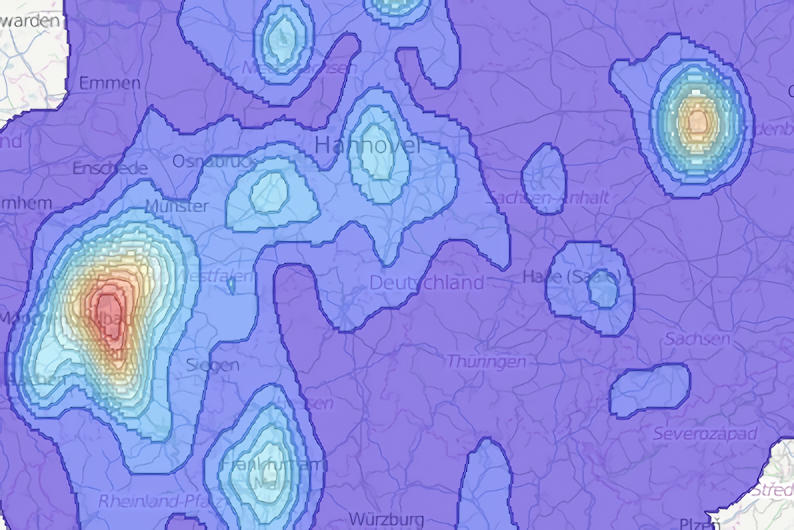
Modelling on-demand delivery networks
Posted 06 Jun 2016
The on-demand delivery market is this year’s poster child for disruptive tech, with dozens of companies battling it out like Jinn and Deliveroo for takeaway food, Stuart for business couriers and UberRUSH for just about everything
Currently many on-demand delivery companies are using very simple planning and dispatching methods - for example just dispatch the delivery to the nearest driver. This approach more-or-less works, but isn’t very efficient. Sophisticated vehicle routing and scheduling algorithms can instead perform intelligent planning and dispatching of deliveries, leading to fewer late deliveries, less drive time and smaller driver fleets being able to serve the same customer base.
Vehicle routing systems aren’t magical though; to successfully integrate one requires careful design, complex configuration and above all, proper modelling of the delivery network before going live. Without modelling the performance in-advance of go-live, and feeding those test routes back to your transport planners for appraisal, you essential have no idea what the optimiser is going to do on Day One. Will you really reduce driving time? Have you missed some key constraints or working rules? Careful modelling helps answer these questions, but modelling isn’t just something you can do once and once only. To keep a delivery network well-tuned, as your business grows you should test ‘what-if’ scenarios like ‘should I change my driver base locations?’, ‘what happens if I start to deliver to this area?’ and ‘do I need longer shifts or more drivers?’
So careful modelling is not just important, it is vital for success.
Now here we come to something I call the ‘crystal ball assumption’.
The whole point about on-demand deliveries is that you don’t book your pizza to arrive, parcel to be collected or laundry to be cleaned days in-advance; you book when you decide you want the service and it comes, on-demand, within an hour or so. This has big implications for offline modelling - drivers are already out on the road working hard when new orders come in. This means that unlike traditional freight logistics, you cannot plan a whole day’s work at the start of the day, because you don’t know what deliveries you will be making.
So what’s the crystal ball assumption? Simply put, you model on-demand deliveries by pretending they’re not on-demand, and assume you magically know about all of your deliveries before your driver shift even starts.
What’s the result of this assumption? Any modelling you do will drastically overestimate the efficiency savings you get through route optimisation. You then go live and on Day One the promised savings don’t materialise when you run the system for real. You’ve spent lots of time, effort and money implementing and integrating a system that just doesn’t ‘deliver’.
But surely no-one ever makes this assumption? Rather worryingly, I’ve seen this done a few times. More worrying still, the big-name vendors of route optimisation systems don’t appear to have the only correct solution - a simulator - in their publicised product lines.
To model on-demand deliveries properly, without the crystal ball assumption, you need to use a simulator. Loosely speaking, a simulator wraps around a routing / dispatching algorithm and simulates the evolution of the planning over the entire drivers shift. So at the start of the shift, only a few delivery jobs are known and the simulator plans for just those jobs whilst separately simulating the vehicles as ‘agents’ which depart for stops, arrive and then complete them. As jobs become known, the simulator re-plans taking into account the positions of the simulated vehicles at the time and what deliveries they’ve already completed. Within the simulation, the delivery plan evolves continually over the course of the day as the situation changes. So if you do your modelling using a simulator, it’s valid and you can trust the results.
Open Door Logistics has a simulator tool for our upcoming real-time route optimisation engine, ODL Live. For a limited time period we are offering to model on-demand delivery networks for free, using our simulator. You provide us with historic data - e.g. a peak demand day or week - and we give you back the results from our simulator. If you work for an on-demand delivery company, or any other company which does real-time route planning and you’d like to know, through rock-solid modelling, what efficiency savings vehicle route optimisation can bring you, then please contact us.


